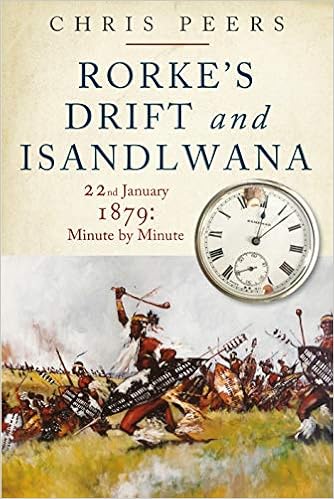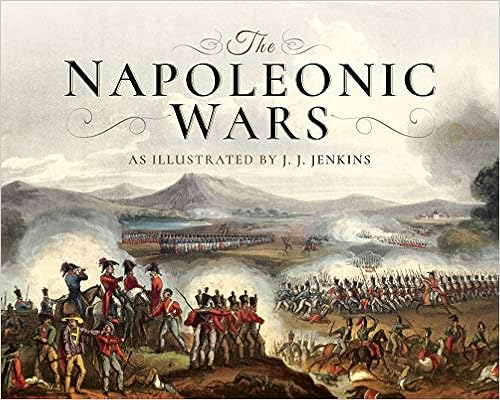Alfred Thayer Mahan: Advocate for Seapower
By Larry Parker
Introduction
In 1865 the United States Navy mustered 700 ships (many of them iron clad and steam powered), mounting 5,000 cannon (many of those rifled, shell guns of the latest design), crewed by 6,700 officers and 51,000 men. In just five years 92.6 per cent of the fleet had been sold, scrapped or laid up. Only 52 ships mounting 500 guns remained in active commission. These, with a few notable exceptions, were crewed largely by the dregs of the waterfront for, as promotion and advancement opportunities stagnated, officers and enlisted personnel left the service in droves taking with them hard won battle experience and years of training. In this environment the eighteen knot USS Wampanoag[1] , first warship to employ super heated steam, was scrapped as congress mandated a return to sail in order to save money on coal. A post war, isolationist, defensive mentality exacerbated the rush to disarm. Costal fortifications were deemed less provocative and considerably less expensive than a credible blue water navy.
As the United States bound its wounds and gradually recovered from reconstruction the nation began to look outward again. Of the forty-eight contiguous states by 1896 all but the Indian Territories had been tamed and entered the Union. Arizona, New Mexico and Oklahoma followed shortly after the turn of the century. Having settled the North American continent from the Atlantic to the Pacific people began to consider transcontinental acquisitions as a natural extension or continuation of "Manifest Destiny."[2] In addition to the social and moral factors at work, a resurgent and increasingly industrialized America faced the prospect of saturated domestic markets further fueling the desire for overseas expansion.[3] A renewed interest in foreign trade required a strong Navy to compete with Britain, France and Germany who were building empires in Africa, India and Asia through colonies and spheres of influence. Following the lean years of the 1870's, the government was naturally interested in stimulating the economy. The burgeoning steel and ship building industries also looked with favor on a revitalized Navy for obvious reasons. In this atmosphere policy makers began to question the traditional commerce raiding strategy of the Revolutionary War, War of 1812 and Civil War. Increasingly they called for a fleet of capital ships, which could break any attempted blockade, prevent invasion and expand and protect American interests abroad. Modern warships required large capital investment at home and bases overseas to take on coal, replenish provisions and make repairs. Thus the requirements for a rejuvenated navy dovetailed neatly with an expanding economy, territorial acquisition and popular opinion.
In November 1884 as the forces of change grew in the United States a reluctant sailor perused the elegant library of the English Club in Lima, Peru. Invited to give a series of lectures at the recently established Naval War College he searched the polished shelves seeking inspiration. Taking up a leather bound copy of Mommsen's The History of Rome the middle aged officer settled into an overstuffed chair and began to study Hannibal's invasion of Rome during the Second Punic War. In that moment was born the most influential book on naval strategy and foreign policy of his era. In time this event would transform his heretofore undistinguished career and alter world events.
 Alfred Thayer Mahan
Alfred Thayer Mahan
It is ironic that one of the worst seamen to ever command a ship underway should become one of the most influential naval theorists in maritime history. In 1861 Mahan drove the Pocahontas into the anchored Seminole. In 1874 Mahan scored a humiliating hat trick. While commanding Wasp he struck a barge at anchor, damaged an Argentinean warship during a storm off Buenos Aires and wedged the hapless Wasp into a dry dock caisson where it remained stuck fast for ten days much to the amusement of the citizens of Montevideo and his chagrin. On a calm sea in broad daylight in 1883 while commanding the Wachusett he collided with a bark under sail. His most embarrassing moment however came in 1893 when he hit the Naval Academy Training Ship Bancroft with the Chicago at the New York Naval Shipyard in Brooklyn. In addition to his notable achievements as a historian, Mahan holds the dubious distinction of grounding or colliding every ship he ever commanded except the Iroquois. This accident-prone Captain alternated his time at sea with tours at the recently established Naval War College where he was noted for his absolutely stultifying lectures.
Unable to bear the stress of command at sea again Mahan retired in 1896 in order to follow his true calling, that of historian and author. His twenty-one books, 137 articles and 107 letters to the editor had a profound influence not only in the United States but also throughout the world. His most important work, The Influence of Sea Power Upon History, published in 1890, grew out of a series of lectures given at the Naval War College. This book received worldwide attention. Hailed in England he dined with the Queen. Cambridge and Oxford conferred honorary degrees. Kaiser Wilhelm II ordered copies of The Influence of Sea Power Upon History placed onboard every ship of the Kaiserliche Marine and in every school, library and government office. Japan followed suit issuing translations to all army and navy officers, political leaders and schools.
Like many of his age Mahan believed that every element of human enterprise, be it science, history, social behavior or war, was governed by natural, universal laws ordained by God. With the proper application of reason these laws could be deduced and applied to ones benefit. Mahan sought to do for war at sea what Jomini and Clausewitz had done for land warfare. He argued that geographical position, physical conformation, extent of territory, number of population, national character and character of government formed the basis of sea power and formulated strategic and tactical principles for the application of sea power based on his study of history. In his work he called for concentration of force at critical points and preached the ideal of decisive victory. In Mahan's mind battleships were the instrument of decisive victory and thus the measure of national power and international prestige.
In 1881 the United States Navy ranked 12th in the world behind Chile, China and Denmark. When a wealthy socialite lamented America's lack of antiquities the satirist Oscar Wilde remarked, "No ruins! You have your Navy!" Mahan's writings came at an opportune moment, lending the weight of history and science to popular sentiment for a revitalized navy. As Mahan grew in status as a scholar he gained influence with powerful men such as Theodore Roosevelt. As a direct result of his work, the United States embarked upon a massive shipbuilding program devoting as much as 20.7% of the Federal budget to the Navy (see Table One.)
Table One: Comparison of Naval Expenditures to Total Federal Expenditures 1890-1914 and 2005 DOD / DON Budgets
From Sea Power, Page 187
| Fiscal Year | Total Federal Expenditures | Naval Expenditures | % of Total |
| 1890 | 318,040,711 | 22,006,206 | 6.9 |
| 1900 | 520,860,847 | 55,953,078 | 10.7 |
| 1905 | 567,278,914 | 117,550,308 | 20.7 |
| 1909 | 693,743,885 | 115,546,011 | 16.7 |
| 1914 | 735,081,431 | 139,682,186 | 19.0 |
| 2005 | 2,400,000,000,000 | 402,000,000,000 | 16.75 - DOD |
| 2005 | 2,400,000,000,000 | 120,000,000,000 | 5.0 - DON |
From 1895 to 1918 the United States commissioned no less than forty-three battleships (see Table Two) in addition to cruisers, torpedo boat destroyers and other craft.
Table Two: Shipbuilding Program 1895-1918
| Year Comm. | Name | Year Comm. | Name |
| 1895 | Maine | 1907 | Kansas |
| 1895 | Texas | 1907 | Minnesota |
| 1895 | Indiana | 1908 | Mississippi |
| 1896 | Massachusetts | 1908 | Idaho |
| 1896 | Oregon | 1908 | New Hampshire |
| 1897 | Iowa | 1910 | South Carolina |
| 1900 | Kearsage | 1910 | Michigan |
| 1900 | Kentucky | 1910 | Delaware |
| 1900 | Alabama | 1910 | North Dakota |
| 1901 | Illinois | 1911 | Florida |
| 1901 | Wisconsin | 1911 | Utah |
| 1902 | Maine | 1912 | Wyoming |
| 1903 | Missouri | 1912 | Arkansas |
| 1904 | Ohio | 1914 | New York |
| 1906 | Virginia | 1914 | Texas |
| 1906 | Georgia | 1916 | Nevada |
| 1906 | New Jersey | 1916 | Oklahoma |
| 1906 | Rhode Island | 1916 | Pennsylvania |
| 1906 | Connecticut | 1916 | Arizona |
| 1906 | Louisiana | 1917 | Mississippi |
| 1907 | Nebraska | 1918 | New Mexico |
| 1907 | Vermont |
Although his tactical observations were on a par with his seamanship and he has been blamed for precipitating the naval race between England and Germany Mahan's fundamental principles remain sound:
Naval power is national power
Sea power and world involvement are crucial to national security
Conclusion
In its time, Mahan's writings on maritime strategy placed the Navy front and center on the national stage. As a result the Navy was able to transcend its commerce raiding traditions and become the premier instrument of national policy. That primacy remains valid today. In support of Operation Iraqi Freedom the Navy deployed seven aircraft carriers, eight large deck amphibious ships, more than 100 surface combatants and submarines and twenty-one logistics ships. In addition seventy-six sealift ships were required to transport heavy equipment and supplies for the Army and Air Force. Some 77,000 sailors and nearly 100,000 Marines deployed. During the offensive phase of the war Navy and Marine pilots flew more than 4,900 sorties. In the continuing War on Terror Navy and Marine Corps aviators have flown over 10,000 combat missions in Afghanistan and Iraq, far more than the Air Force. In addition to its ability to project power ashore and deter aggression by its mere presence, when natural disasters strike at home or around the world, the Navy is frequently the first to respond.
In 1987 the Navy mustered 594 commissioned warships. 284 [4] remain. Support of Operation Iraqi Freedom required more than 70% of the entire surface combatant fleet and 50% of the submarine force. After 9/11 Admiral Vern Clark, then CNO, lobbied in Congress for a fleet of not less than 375 ships to meet current and emerging threats. His appeal has been ignored. The 2005 budget cut shipbuilding by $100 million. Due to projected budgetary constraints there are proposals before Congress to further reduce the American fleet to 260 ships or less [5] while senior officers, who should know better, seriously discuss a return to the failed policy of Jefferson's 'Gunboat Navy' in the form of the Littoral Combat Ship (LCS). Most alarming is the loss of our industrial base and skilled workers. Sixty per cent of our ship building capacity is gone. Should we decide to rebuild the fleet at some point in the future it will take decades to first regenerate the ship building industry.
Our leaders in Washington do not foresee another major conflict. Those with longer memories, those who have studied history, those who understand power projection ashore, those who appreciate the flexibility and credibility a robust navy lends to foreign policy, those with a more cautious assessment of the long-term ambitions China and a resurgent Russia, not to mention the contingency operations required as terrorist threats emerge in various parts of the world are not so certain. For all his faults Mahan understood the correlation between sea power, national power and national security and, through the power of the pen, was able to rejuvenate the Navy as the 20th Century began. The United States is in grave danger of repeating the mistakes of 1807, 1865 and 1945 by forsaking the Navy in pursuit of false economy. America desperately needs a Mahan to speak once again for the Navy in this era. If we cease to invest in sea power, the United States will cease to be a world power
| * * * |
Show Notes
| * * * |
© 2026 Larry Parker
Written by Larry Parker.
About the Author:
Lieutenant Commander Larry Parker, United States Navy, served as a Surface Warfare Officer, with afloat tours onboard USS De Wert (FFG-45) as Ordnance & Fire Control Officer, USS Portland (LSD-37) as First Lieutenant, and USS Butte (AE-27) as Operations Officer. Rotations ashore included Navy Reserve Center Cheyenne, Navy & Marine Corps Reserve Center Denver and Navy Reserve Readiness Command Region 16 Minneapolis. He retired in July 2000 and taught Navy Junior ROTC until June 2011. LCDR Parker holds a Bachelor's degree in English and History from the University of Kansas and a Master's degree in Military Studies - Land Warfare from American Military University. In his free time LCDR Parker pursues a lifelong passion for military history. His articles are the result of extensive research and personal experience in surface warfare, fleet logistics and amphibious operations.
* Views expressed by contributors are their own and do not necessarily represent those of MilitaryHistoryOnline.com.





